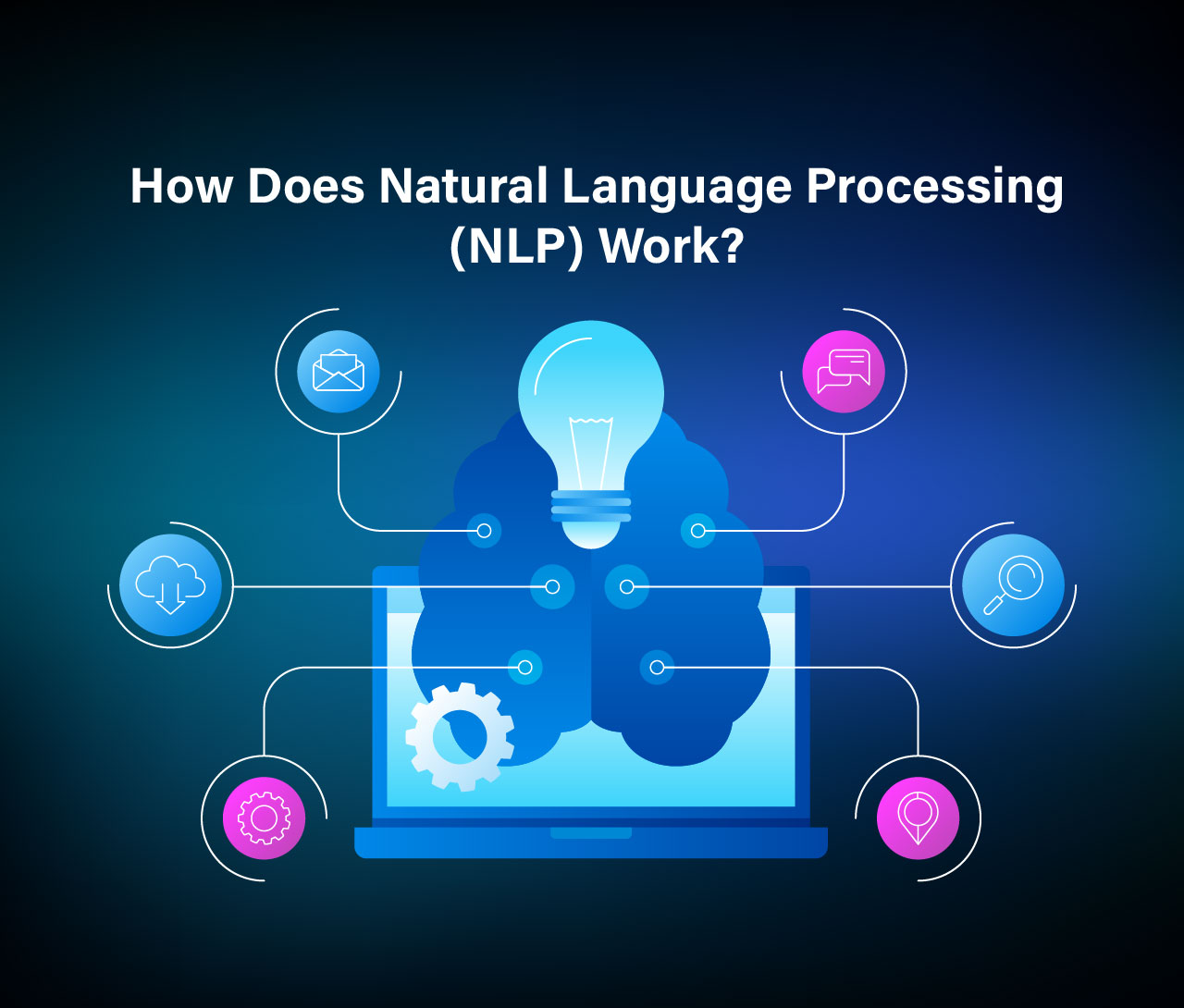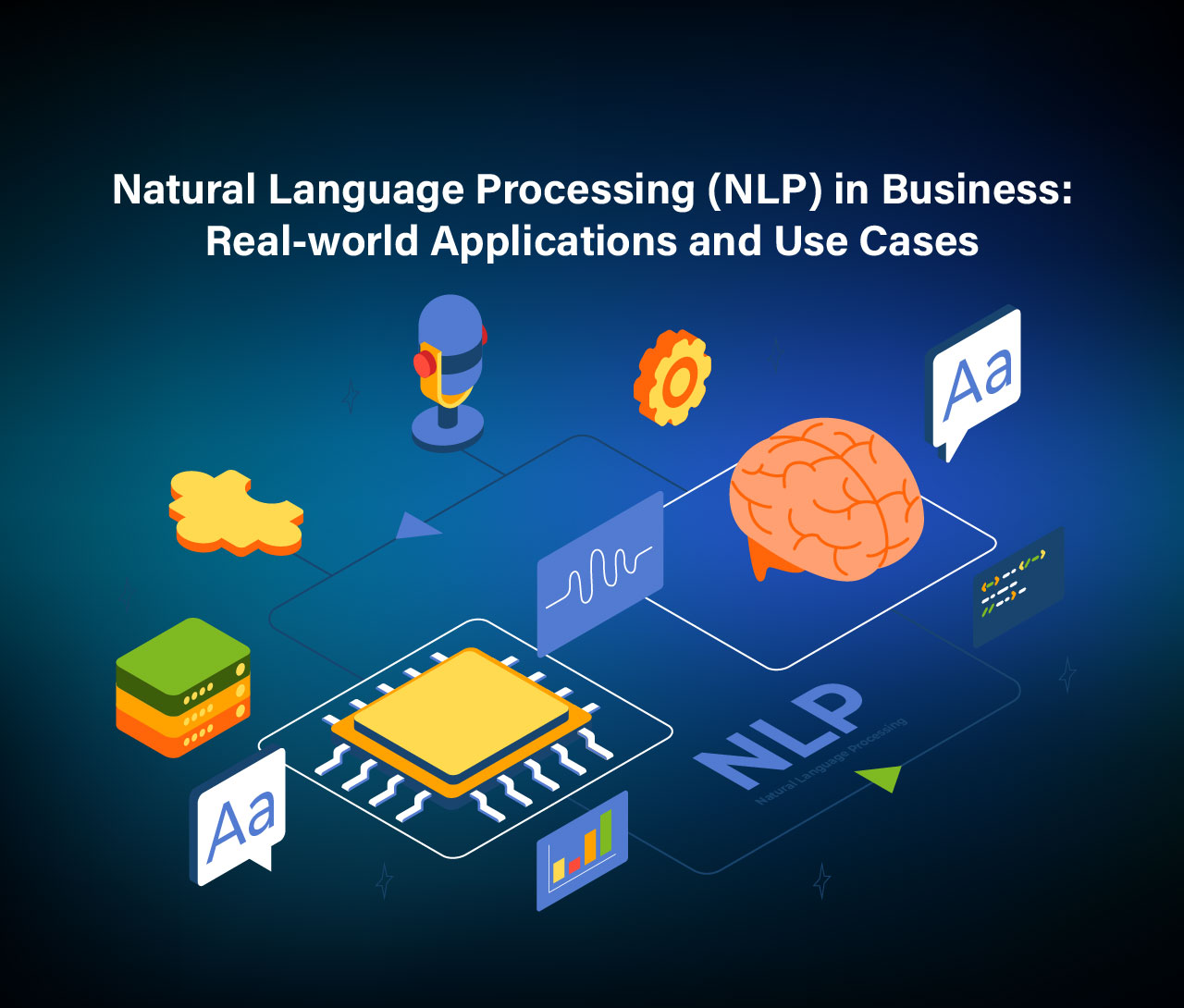Natural Language Processing (NLP) is rapidly advancing, driven by the surge in human-machine communication interest and the availability of robust data, computing power, and refined algorithms.
Humans converse in languages like English, Spanish, or Chinese, while computers rely on their native machine code – a language mostly incomprehensible to us, based on binary code (zeros and ones) for communication and logical actions.
From punch cards to today’s seamless voice commands, NLP has revolutionized interactions with devices like Alexa. This technology, coupled with machine learning and deep learning, adapts to user preferences in real-time.
In this article, let’s explore the transformative impact of NLP on our interconnected world.
What is Natural Language Processing (NLP)?
The capability of a computer program to comprehend spoken and written natural language is known as natural language processing (NLP). While NLP is not a new idea, it is a rapidly advancing field thanks to the growing fascination with human-machine interaction and the abundance of data, robust computing power, and enhanced algorithms.
Humans have the ability to communicate in various languages, such as English, Spanish, and Mandarin. However, many are unfamiliar with the language employed by computers, which is commonly referred to as machine code or machine language. At its core, when your device operates, communication takes place through millions of zeros and ones, resulting in logical actions rather than spoken or written words.
In short, natural language processing software and NLP services are revolutionizing the way we interact with technology, making human-machine communication more intuitive and efficient.
How Does Natural Language Processing (NLP) Work?

NLP is more than just one static technique. In order to add more layers of information, language manipulation necessitates the employment of a variety of strategies that are combined. It’s critical to comprehend some of the fundamental ideas behind language processing when beginning your NLP journey.
It’s expected that NLP employs familiar linguistic techniques. Typically, language processing involves four main steps:
- Morphology – how words are created and how they relate to one another
- Syntax – how a sentence containing these words is constructed
- Semantics – how lexical meaning and grammar disclose the meaning of words
- Pragmatics -contextual meaning of words
Every one of these actions contributes an additional layer of contextual understanding for words. Let’s take a look into some of the NLP methods that are applied to businesses in more detail.
Natural Language Processing (NLP) in Business: Real-world Applications and Use Cases

Natural language processing software and NLP services are revolutionizing the way we interact with technology. Businesses employ NLP technologies and software to effectively automate, streamline, and simplify processes. Here are some of the real-world applications of this technology.
● Sensitive data redaction
Large numbers of sensitive documents like financial information, medical records, and private data are processed, sorted, and retrieved by companies in the insurance, legal, and healthcare sectors. To protect sensitive data and redact personally identifiable information, businesses employ natural language processing (NLP) technology rather than examining it manually. Chisel AI, for example, assists insurance providers in using Amazon Comprehend to extract policy numbers, expiration dates, and other private client characteristics from unstructured documents.
● Customer engagement
Chat and voice bots can now converse with clients in a more human-like manner thanks to natural language processing (NLP) technologies. Chatbots are used by businesses to increase customer support capability and quality while minimizing operational expenses.
● Business Analytics
Marketers can acquire a knowledgeable understanding of how customers feel about a company’s goods or services by using NLP tools like Amazon Lex and Amazon Comprehend. They can determine the consumers’ moods and emotions from textual feedback by scanning for particular terms. For instance, Success KPI offers natural language processing tools that assist organizations in concentrating on certain sentiment analysis topics and assisting contact centers in deriving useful information from call analytics.
NLP APIs
With the use of natural language processing APIs, programmers can incorporate human-to-machine communication while carrying out a number of practical tasks like chatbots, sentiment analysis, speech recognition, and spelling checks.
Here is a list of NLP APIs:
● IBM Watson API
The IBM Watson API gives programmers the ability to categorize text into a broad variety of discrete categories by utilizing a number of powerful machine-learning algorithms. Several languages, including English, Chinese, German, and French, can be used. The IBM Watson API makes it easy to acquire data from texts, automate procedures, improve search, and analyze sentiment. The biggest benefit of this API is how friendly it is.
● Chatbot API
Intelligent chatbots can be developed for any service using the chatbot API. It speaks numerous languages, organizes text, works with Unicode letters, etc. It is relatively easy to use. It facilitates the development of chatbots for online applications.
● Google Cloud Natural Language API
The Google Cloud Natural Language API can be used to extract valuable data from unstructured text. The more than 700 predefined categories available through this API can be used for sentiment analysis, entity recognition, syntax analysis, and content classification. You may also read materials published in a variety of languages, including English, French, Chinese, and German.
Natural Language Processing (NLP) in Action
NLP may sound like it belongs in a science fiction book, but in reality, people currently use a huge number of NLP-powered products and services on a daily basis.
NLP is used, for instance, by online chatbots to interact with customers and steer them toward the right information or goods. Businesses prefer chatbots because they provide reasonably priced solutions to problems or queries that customers may have about their products, even though they can’t address every question that a customer may have.
Natural language processing (NLP) is also frequently used for text prediction and autocorrect, which you have probably used numerous times while writing a document or contacting a friend. Texters and writers alike can speed up their writing processes and fix typical typos thanks to this technology.
Final Thoughts
Natural language processing (NLP) is revolutionizing human-machine interaction, leveraging vast data, powerful computing, and refined algorithms. This technology has not only transformed how we engage with machines but has also found diverse applications across industries.
NLP’s ability to understand and respond to human language has become a fundamental aspect of modern computing, impacting sectors from healthcare to customer service and education to content creation. Additionally, Natural Language Processing with Python is now easier to use than ever because of the development of potent programming languages like Python, which enable programmers to build sophisticated systems that can process, examine, and produce human language in a variety of settings. Embracing this evolution will undoubtedly shape the future of communication, learning, and business in our interconnected world.


